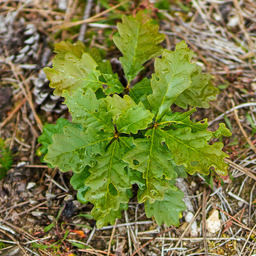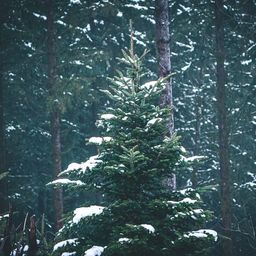
Pear tree: Uses and characteristics
The Pear tree, native to Europe and Asia, is a melliferous tree appreciated for its fruit and wood, while playing an important ecological role by supporting pollinators and local biodiversity.
Pear tree
Native to Eastern Europe and Western Asia, the Pear tree (Pyrus communis) was already cultivated by the ancient Greeks and Romans, who enjoyed its fruit both fresh and preserved. Pliny the Elder, a 1st-century Roman naturalist, mentions over 40 varieties of pear in his writings. In the Middle Ages, the pear tree gained popularity in European monastic orchards, where monks developed new varieties. Over the centuries, pear cultivation spread throughout Europe, particularly in France and Belgium, where it became an emblematic fruit tree.
Why does EcoTree plant Pear trees?
The Pear tree is a species melliferouswhich means that its flowers provide nectar for bees and other pollinating insects. Planting pear trees can help support these essential pollinating insect populations, not only for the pear tree itself but also for other trees in the forest.
Its fruit is a source of food for many animals, such as birds and small mammals. These interactions contribute to the balance and diversity of the local fauna.
The Pear tree is therefore ideal as a companion species in a forest, especially at the edge of the massif.
Pear tree - Overview
Pear tree - Overview
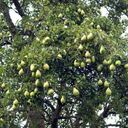
Pear tree - Species requirements
The Pear tree prefers temperate climates. It tolerates winter cold well (down to around -15°C to -20°C depending on the variety), which is necessary for the dormant period and flower induction. However, it can be sensitive to spring frosts, which can damage the flowers and reduce the harvest.
Pyrus communis needs plenty of light to produce quality fruit. It prefers full sun exposureideally in a well-ventilated area to limit the appearance of diseases (such as scab or fire blight).
Regular pruning maintains a good balance between vegetative development and fruit production. It also improves air circulation and limits disease.
Pear tree's wood
The wood of Pear tree is dense, homogeneous and has an attractive, smooth finish. It is generally pinkish-brown to reddish-brown in color, giving it a warm, elegant appearance. Once polished, it offers a silky texture that makes it highly prized in the manufacture of high-quality furniture and decorative objects.
Because of its hardness and strength, the wood of Pear tree is commonly used in the manufacture of small furniture and precision items. It is easy to carve and turn, making it popular for ornamental furniture, veneers, interior trim and other decorative items requiring a refined finish.
It is also used in the manufacture of certain parts of musical instruments, notably piano keys.
The wood of Pear tree can also be used to manufacture everyday items such as boxes, kitchen utensils (spoons, cutting boards), and sometimes knife handles. Its density and fine texture enable precise, durable manufacture.
Pear tree's symbolism
The Pear tree is often seen as a symbol of fertilitylargely due to its ability to produce abundant fruit. In some cultures, it is also associated with wisdom and spiritual knowledge.
In China, there is a superstition linked to sharing a pear. The Chinese word for "sharing a pear" is phonetically similar to the word for "separation". Thus, offering a pear or dividing it between two people can symbolize separation and future sadness, which has created a certain caution around this gesture.
Our selection of trees
Our goal is to enable anyone to do something that benefits nature and helps us to live in a more harmonious world. So why not become a tree owner in a European forest and help combat climate change?
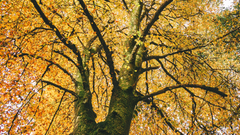



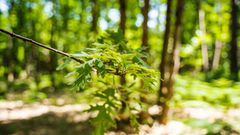

Please note that this is promotional communication. See our notice of information.



